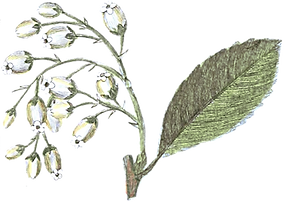
healing through play
Play Therapy Based Interventions
References
Booth, P. B, & Jernberg, A. M. (2010). Theraplay: Helping parents and children build better relationships through attachment-based play (3ed). San Francisco, CA: Jossey-Bass A Wiley Imprint.
Brain Gym. (2011). Retrieved from www.braingym.org/.
Bratton, S. C., Ray, D., Rhine, T., & Jones, L. (2005). The efficacy of play therapy with children: A meta-analytic review of treatment outcomes. Professional Psychology: Research & Practice, 36(4), 376-390. doi:10.1037/0735-7028.36.4.376.
Bratton, S.C., Landreth, G., Kellam, T., & Blackard, S (2006). Child-parent- relationship training parent notebook: Parent handouts, notes, and homework sesssion 1-10. New York, Routledge: Taylor & Francis Group.
Bratton, S. C., Ray, D. C., Edwards, N. A., & Landreth, G. (2009). Child-centered play therapy (CCPT): Theory, research, and practice. Person-Centered & Experiential Psychotherapies, 8(4), 266-281. Retrieved from http://web.b.ebscohost.com/ehost/pdfviewer/pdfviewer?vid=5&sid=32b85382-de73-49e4-b96a-7b0fa2189507%40sessionmgr114&hid=106.
Buchalter, S. I. (2009). Art therapy techniques and applications. London, UK & Philadelphia, PA: Jessica Kingsley Publishers.
Curtis, J., & Cornell, L. (2002). I’m gonna like me. New York, NY: Joanna Cotler Books.
Dunbar, J. (2013). YWCA of calgary: Children exposed to domestic violence children's group facilitator manual. Calgary, AB.
Guber, T. (2005). Yoga pretzels: 50 fun yoga activities for kids and grownups. Merseyside, UK: Barefoot Books Ltd.
Heegaard, M. (1991). When mom and dad separate. Minneapolis, MN: Woodland Press.
Heegaard, M. E. (2003). Drawing together to learn about feelings. Minneapolis, MI: Fairview Press.
Holmes, M. (2000). A terrible thing happened. Toledo, OH: Hippo Books.
Hopkins, B. (1999). My mom has a bad temper. Washington, DC: Child and Family Press.
Jessie. (1991). Please tell: A child’s story about sexual abuse. Centre City, MN: Hazelden Foundation.
Jones, K., Casado, M., & Robinson, E. (2003). Structured play therapy: A model for choosing topics and activities. International Journal Of Play Therapy, 12(1), 31-45. doi:10.1037/h0088870.
Kaduson, H. G., & Schaefer, C. E. (2006). Short-term play therapy for children. (2nd ed.). New York, NY: The Guilford Press.
Karst, P. (2000). The invisible string. United States: Eleventh Printing.
Kenney-Noziska, S. G., Schaefer, C. E., & Homeyer, L. E. (2012). Beyond directive or nondirective: Moving the conversation forward. International Journal Of Play Therapy, 21(4), 244-252. doi:10.1037/a0028910.
Knot, S., Landreth, G. L., & Giordano, M. (1998). Intensive child-centered play therapy with child witnesses of domestic violence. International Journal Of Play Therapy, 7(2), 17-36. doi:10.1037/h0089421.
Landreth, G. L. (2012). Play therapy: The art of the relationship (3ed.). Milton Park, Ox: Routledge.
Lester, H. (2014). Hurty feelings. New York: Books For Young Readers.
Lite, L. (2008). Bubble riding. A relaxation story for children. Stress Free Kids.
Lite, L. (2011). Angry octopus: An anger management story introducing active progressive muscular relaxation and deep breathing. Stress Free Kids
Lowenstein, L. (1999). Creative interventions for troubled children & youth. Toronto, ON: Hingnal Book Printing.
Lowenstein, L. (2002). More creative interventions for troubled children & youth. Toronto, ON: Hignell Book Printing.
Lowenstein, L. (2010). Assessment and treatment activities for children, adolescents, and families. Volume two. Practitioners share their most effective techniques. Canada: Champion Press.
Lowenstein, L. (2010). Creative family therapy techniques: Play, art, and expressive activities to engage children in family sessions. Toronto, ON: Champion Press.
Lowenstein, L. (2011). Assessment and treatment for children, adolescents, and family: Volume three. Toronto, ON: Champion Press.
MacLean, K. L. (2009). Moody cow meditates. Somerville, MA: Wisdom Publications.
Marcus, I.W., & Marcus, P. (1992). Into the great forest: A story for children away from parents for the first time. New York: Magination Press.
O’Neill, C. (2002). Relax. New Delhi, Allied: Child's Play International Limited.
Paris and Me. (2003). Featured technique. Retrieved from http://www.parisandme.com/technique.html.
Patterson, S.Y. (1988). No no the little seal: A story for very young children that talks about sexual abuse. Random House Autobooks.
Patterson, S. (1990). I wish the hitting would stop. Facilitator's guide: A workbook for children living in violent homes. Red Flag Green Flag Resources.
Penn, A. (1993). The kissing hand. Washington, DC: Child Welfare League of America.
Ray, D., Bratton, S., Rhine, T., & Jones, L. (2001). The effectiveness of play therapy: Responding to the critics. International Journal Of Play Therapy, 10(1), 85-108. doi:10.1037/h0089444.
Routledge Mental Health. (2012, May 16). Retrieved fromhttps://www.youtube.com/watch?v=JIMWOOlR_9g.
Schor, H. (2002). A place for starr. A story of hope for children experiencing family violence. JIST Publishing.
Shapiro, L., Spraque, R., & McKay M. (2009). The relaxation & stress reduction workshop for kids: Help for children to cope with stress, anxiety, and transitions. A Division of New Harbringer Publications, Inc.
Sheppard, C. ( 1998). Brave bart: A story for traumatized and grieving children. Gosse Pointe Woods, MI: The Institute for Trauma and Loss in Children.
Smith, N., & Landreth, G. (2003). Intensive filial therapy with child witnesses of domestic violence: A comparison with individual and sibling group play therapy. International Journal Of Play Therapy, 12(1), 67-88. doi:10.1037/h0088872.
Snel, E. (2013). Sitting still like a frog, sitting: Mindfulness exercises for kids (and their parents). Boston: Shambhala Publication.
Steward, A. & Marlow L. (2008) Little by little. Oxford: OUP Oxford.
Stickids. (2015). Summary Planner. Retrieved from www.stickids.com.
Sunderland, M. & Hancock, N. (2001). Willy and the wobbly house. United Kingdom: Speechmark Publishing Ltd.
Urquiza, A. J. (2010). The future of play therapy: Elevating credibility through play therapy research. International Journal Of Play Therapy, 19(1), 4-12. doi:10.1037/a0018217.
What do you know? (n.d.). Cares Institute. Retrieved from http://www.caresinstitute.org/Products.php
Williams, M.L. (1996). Cool cats, calm kids: Relaxation and stress management for young people. San Luis Obispo, CA: Impact.